Vizio M-Series Quantum (M65Q7) 65-inch TV review: M is for modest 4K
The Vizio M-Series Quantum provides decent big-screen performance on a budget
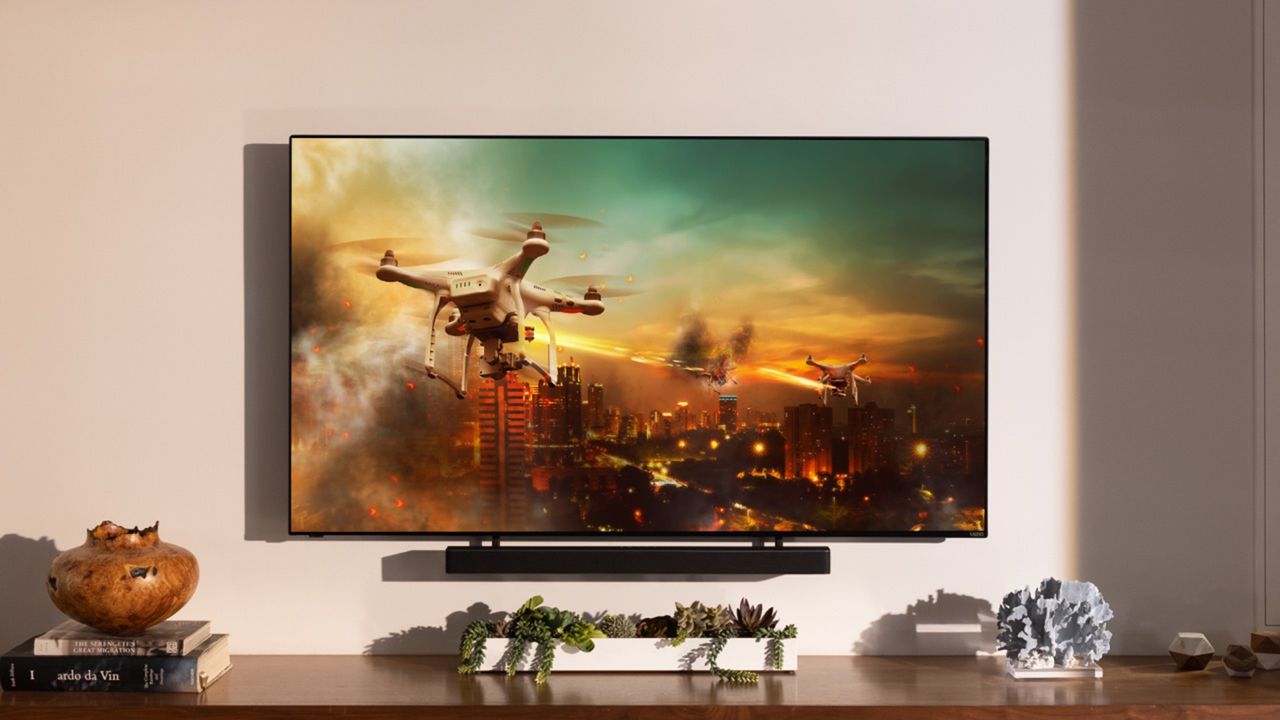
For those looking to go large on a budget, the 65-inch Vizio M-Series Quantum provides a solid 4K picture and plenty of connections. Just don't expect perfection from the sound.
-
+
Respectable picture quality
-
+
Reasonable price
-
-
Disappointing sound quality
-
-
Slower refresh panel
Why you can trust T3

Our appetite for larger TVs continues to increase with 65-inch sets now considered to be de rigueur for living rooms. The trick is finding something in that size that doesn't also consume your entire budget. Vizio's M-Series Quantum (M65Q7) is designed to appeal to such shoppers by offering a solid set of features and respectable picture quality, all for a price tag in the US that puts it in the running for the best TV under $1000 (not currently available in the UK or Australia).
The Vizio M-Series Quantum line is designated such because it uses an additional quantum film layer in the display to expand the palette of available colors. Indeed, I found accurate color reproduction to be one of the hallmarks of this 65-inch set, as well as possessing a solid set of features for 4K movie watching, including support for high dynamic range (HDR) formats like Dolby Vision and HDR10+ that add an additional level of intensity to bright highlights and high-contrast scenes. While the Vizio M-Series Quantum set was far from the best performer I've auditioned, its price point makes it worth considering if you're looking for a big-screen bargain.

Vizio M-Series Quantum Review: Price and Features
Confusingly, the Vizio M-Series Quantum TVs actually consist of two separate model lines, the MQ7 we reviewed and the less expensive MQ6. Both model lines are 4K sets with quantum dot designs and the same Vizio SmartCast software with voice search. But the 65-inch MQ7 has a list price of $900 compared to the same size MQ6, which is just $680. So why the price disparity?
While they may look virtually identical with the power off, the two sets differ in some important respects. Specifically, the full-array LED MQ7 model has 30 local dimmable backlighting zones, which the MQ6 lacks. Those active zones mean that the MQ7 is able to brighten or darken different sections of the same image in order to improve contrast and the detail one can see in shadowy corners of scenes (picture cave or basement scenes with a bright flashlight beam or candlelight). Vizio also notes that the MQ7 has more advanced video processing to improve the clarity of fast-motion scenes. And the MQ7 model has one additional HDMI input.
Certainly, there's enough ports and connections to make the M-Series Quantum MQ7 the centerpiece of a home theater. On the right back of the set is an L-shaped panel with a series of hookups including 4 HDMI 2.1 ports, one of which is an eARC or enhanced audio return channel HDMI plug for automatically synching with a compatible sound bar or receiver. There is also a USB 2.0 port, composite video inputs for antediluvian video sources like a VCR, digital and analog audio outputs, plus an RF coaxial connection (usually for an antenna) and an Ethernet port.
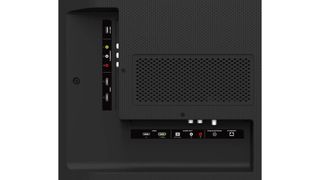
Vizio M-Series Quantum review: Picture Performance
The Vizio M-Series set offers several preset picture settings: Vivid, Bright, Calibrated, Calibrated Dark, Game and Sports. It can also sense the ambient light in your room and automatically brighten or darken the picture accordingly. Unfortunately, there is no support for Filmmaker Mode, a setting designed to reproduce as closely as possible a movie with the director's original picture adjustments. However, under advanced settings you will find an ersatz Film Mode and the option of tweaking a variety of video processing effects, including edge enhancement, motion control (to reduce blur), and the active full array dimming.
For testing purposes, I determined that Calibrated mode was best for handling a wide variety of programming, from broadcast news to 4K movies. Indeed, the Vizio M-Series did an excellent job reproducing color, delivering nearly 100% of the standard color spectrum. That’s not an unexpected result for sets of this caliber and size, but it was also noteworthy for its color accuracy. Images were neither too cool (tending toward the blue end of the spectrum) nor too hot (tending toward the red end of the spectrum). All that bade well for the viewing tests.
Watching the 4K series Sweet Tooth, the color fidelity was reflected in the verdant green forests and pristine blue-grey mountain ranges. From the hybrids to the pink doctor's gowns, the colors looked realistic without becoming over saturated. I found the same to be true of the 4K version of Star Wars: the Rise of Skywalker. The sand of the desert scenes was balanced against brilliant red explosions while the rust hues of a leather jacket and the blue flames of the Storm Trooper's ship thrusters remained crisp and clear.
If there was an obvious picture performance weakness it came in watching the Vizio M-Series handle subtle color and hue transitions. Scenes with sunsets or of bright lights in a dark room or cave revealed some banding rather than the smooth transitions one should see as the set reproduces one shade to the next. I witnessed some of that banding here in 4K scenes on the Vizio M-Series, but rarely was it conspicuous to the point of distraction.
Since the majority of programming is still in HD rather than 4K resolution, I also watched hours of material that had to be upscaled by the 65-inch Vizio M-Series. The HD version of Chinatown looked remarkably good, faithfully reproducing details like the reflections in the fenders of vintage automobiles and the almost blindingly white teeth in Jack Nicholson's unctuous smile. There was some grainy picture noise in some upscaled scenes, but it was preferable to the pixelation distortion seen in other sets, including the more expensive Vizio P-Series Quantum set. For example, in the Captain America Civil War, laws-of-physics defying final action sequence, the M-Series did extremely well, with no added picture artifacts or image dropouts or distortions.
Gamers should also take note that while the M-Series has a 60-Hz maximum refresh rate – versus the 120 Hz of more advanced displays – it does support variable refresh rate mode and didn't have significant image lag in game mode.
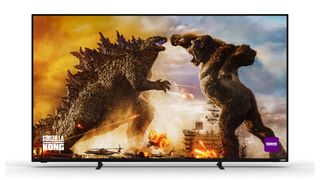
Vizio M-Series Quantum review: Sound Quality
The Vizio M-Series' built-in sound system has 10 watts of power a side, however, we expected more volume out of a set this size. Turning it up to 70% of full volume, for example, was an underwhelming experience and seemed relatively quiet in a large living room.
Owners can adjust the M-Series sound. There is a preset for digitally producing DTS Virtual X surround sound effects, for example. Turned on, it opens up the sound stage and gives movies a more expansive feeling; turning it off centers the sound as if it were coming directly from the middle of the screen. If you turn off the surround sound, you'll find a there's a five-band equalizer that lets you adjust frequencies from 100 Hz to 10 KHz. There are also settings for volume leveling and dialogue enhancement.
Still, no matter how I adjusted the audio, I was never completely pleased with what the Vizio M-Series produced. Using the virtual surround sound for high resolution streaming music on Tidal, the drums and bass guitar on Roxy Music tracks sounded wobbly and hollow like a big rubber band. Turning off the surround setting reduced some of the distortion and restored some of the balance between the high and low notes. But overall, the audio was a disappointment. For some blockbuster movies I drove this set to maximum volume and still we wanted more. So, I recommend adding a sound bar that can handle a Dolby Atmos feed for the best results.
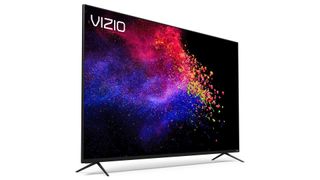
Vizio M-Series Quantum Review: Design and Usability
The overall design of the Vizio M-Series is big screen chic: black, black and more black. That’s fine for most spaces, and the set is ably supported by a pair of V-shaped legs that use short vertical stanchions that insert into the back of the set and screw in securely. Those supports also only fit one way, so you can't put them in backwards or on the wrong side. For tabletop placement, the legs lift the set about 2.5 inches off the table surface.
To master all of the M-Series TV's features, Vizio uses its own smart TV software dubbed SmartCast. It has been steadily improved compared to previous incarnations and now looks a great deal like Google TV, with large rectangular icons of programming options. You get plenty of streaming choices as well, with about 80 online sources such as Netflix and Amazon Prime Video. It covers the most popular apps, but it’s far fewer than the hundreds offered by sets that use either Roku or Google TV.
Still, Vizio has stuck with SmartCast and even added voice search to the interface. A mic built into the remote does the trick and lets you more easily search for movies with Mila Kunis or Max Von Sydow. You cannot ask the system questions like, “How many miles is the moon from the earth?” But if you're hooked on voice assistants, you can have your existing Google Assistant or Alexa enabled device control the M-Series through an app.
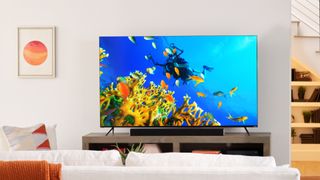
Vizio M-Series Quantum review: Verdict
Selecting a 65-inch set is challenge in the current market. Prices have been rising due to chip shortages and astronomical shipping costs. Manufacturers, however, expect such increases to level off. And Vizio's M-Series still presents a reasonable value. It delivers a color-accurate 4K picture with good contrast and striking highlights thanks to support for Dolby Vision and HDR10+ material. It's weak spots – poor audio and a second-tier smart TV interface – shouldn't disqualify it from shoppers’ short lists.
Vizio M-Series Quantum review: also consider
If you're enamored of the Vizio TVs you may also consider moving up to the Vizio P-Series. That set in the 65-inch size uses more advanced video processing and a faster 120-Hz display with more than 10 times the number of active dimming zones. However, the 65-inch Vizio P-Series Quantum is $300 more than the comparable M-Series.
The major competitor shoppers should also look at is TCL's 5-Series Roku TV. That set boasts a quantum dot display, supports Dolby Vision and HDR10 and thanks to Roku offers a simple yet possibly the most extensive list of streaming programming options. And TCL is intent on catching up with Vizio's market share, offering a virtually identical set of features in the 65-inch size – for exactly the same price.
Sign up to the T3 newsletter for smarter living straight to your inbox
Get all the latest news, reviews, deals and buying guides on gorgeous tech, home and active products from the T3 experts
John R. Quain has covered science and technology for more than two decades. In addition to being a contributor at T3, he is a contributing editor at Tom's Guide, a regular contributor to The New York Times and the weekly tech guru for WTVN. His articles have appeared in Car & Driver, Esquire, Fast Company, Rolling Stone, and U.S. News & World Report, as well as numerous technology publications. Quain was the recipient of a Paris Accords of Science Communication fellowship in 2019. He regularly speaks about issues relating to autonomous vehicles and is the Editor-in-Chief of OntheRoadtoAutonomy.com. You can follow him on Twitter @jqontech
-
 Google Pixel 9a could come with a free perk worth a fifth of the phone itself
Google Pixel 9a could come with a free perk worth a fifth of the phone itselfYou just have to live in the right region
By Britta O'Boyle Published
-
 Your AirPods Pro could be getting a genuinely useful new AI feature this year
Your AirPods Pro could be getting a genuinely useful new AI feature this yearIt's about time
By Sam Cross Published
-
 Tired of crunches? A fitness trainer recommends these five standing exercises for better core strength and stability
Tired of crunches? A fitness trainer recommends these five standing exercises for better core strength and stabilityThey're also great for improving posture too
By Bryony Firth-Bernard Published
